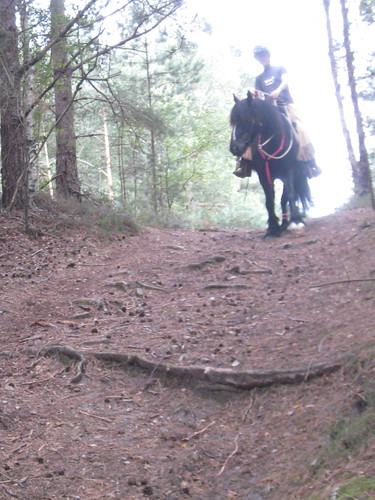This is fairly simple but something I misunderstood for a long time. When I was asking a horse to move off and they weren’t paying attention, I would swing a rope behind them or do something else to send them forward. If they were getting in front of me I might swing the rope ahead of me to ask them not to run into me. This was logical and easy to understand- I swung the rope to create a bundle of energy ( in this sense energy means movement or busyness ) behind my horse and they moved away from it.
Gradually over the last few years I have come to understand that although this does work and sometimes it is what you need, especially when you’re working with a horse who hasn’t got any kind of handle on the rules yet, there is a different way of backing up your cues where you simply treat energy as energy.
Most of what I am doing with energy is asking the horse to look for something different, to indicate to them that I would like them to try something other than what they are currently doing. Usually, I don’t actually want to have to use a swinging rope or other large scale cue to bring about this change because it is not my goal to always need to do this. What I really want is for the horse to follow the direction I am giving them without needing any further encouragement. So by using energy to direct them, I am excusing them from trying to understand my original cue. Rather than try to figure out what I am asking for in the first place, they can wait for me to change to something easier.
A useful metaphor for the way I prefer to work now is driving a car- if I put my foot on the accellerator it makes the engine turn over faster, but where the car goes depends on which gear I am in and where the steering wheel is pointed. When I’m working a horse I will set up my cue and then – if the horse doesn’t seem motivated to look for a response to it – I will create some energy around myself to ask them to look harder. This has the side benefit of encouraging the horse to try and a lot of the time I don’t need to do anything beyond getting their attention and making it clear to them that I am asking for something.
I think this is easier to understand in the saddle because most of us at one time or another have used a crop or similar to ask the horse for more life while directing with the reins or our bodies, and of course the same principles apply here- unless my horse is really confused about what I am asking and needs extra direction ( maybe we are working on yielding a really stuck leg, for example, when I might use a whip to tickle that area ) I will tend to set up what I am looking for and then put a little more life into my horse if I don’t feel them searching for the answer. It doesn’t matter how I do that, as long as the result is that the horse starts searching, because then I can guide them towards the right answer.


